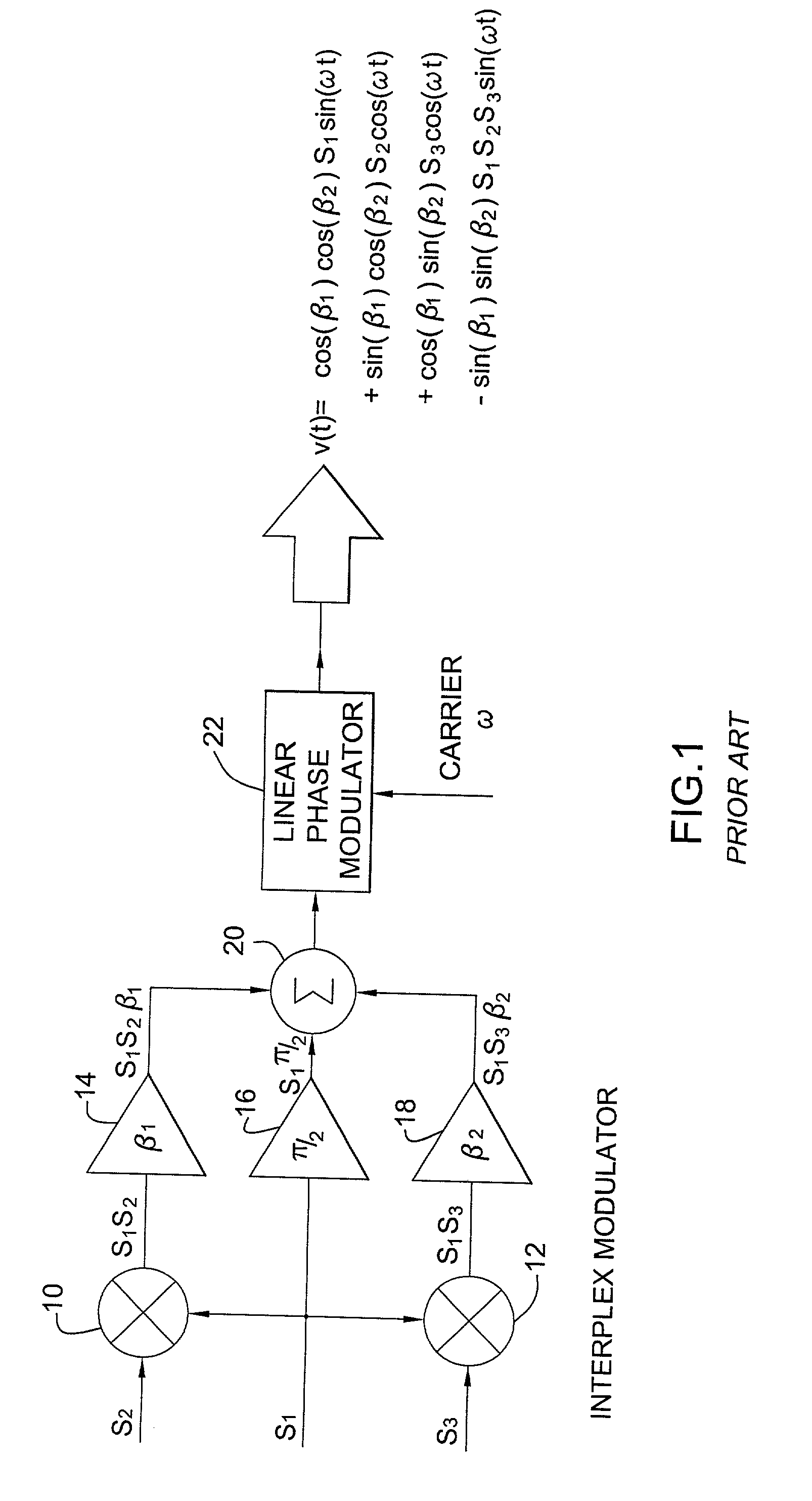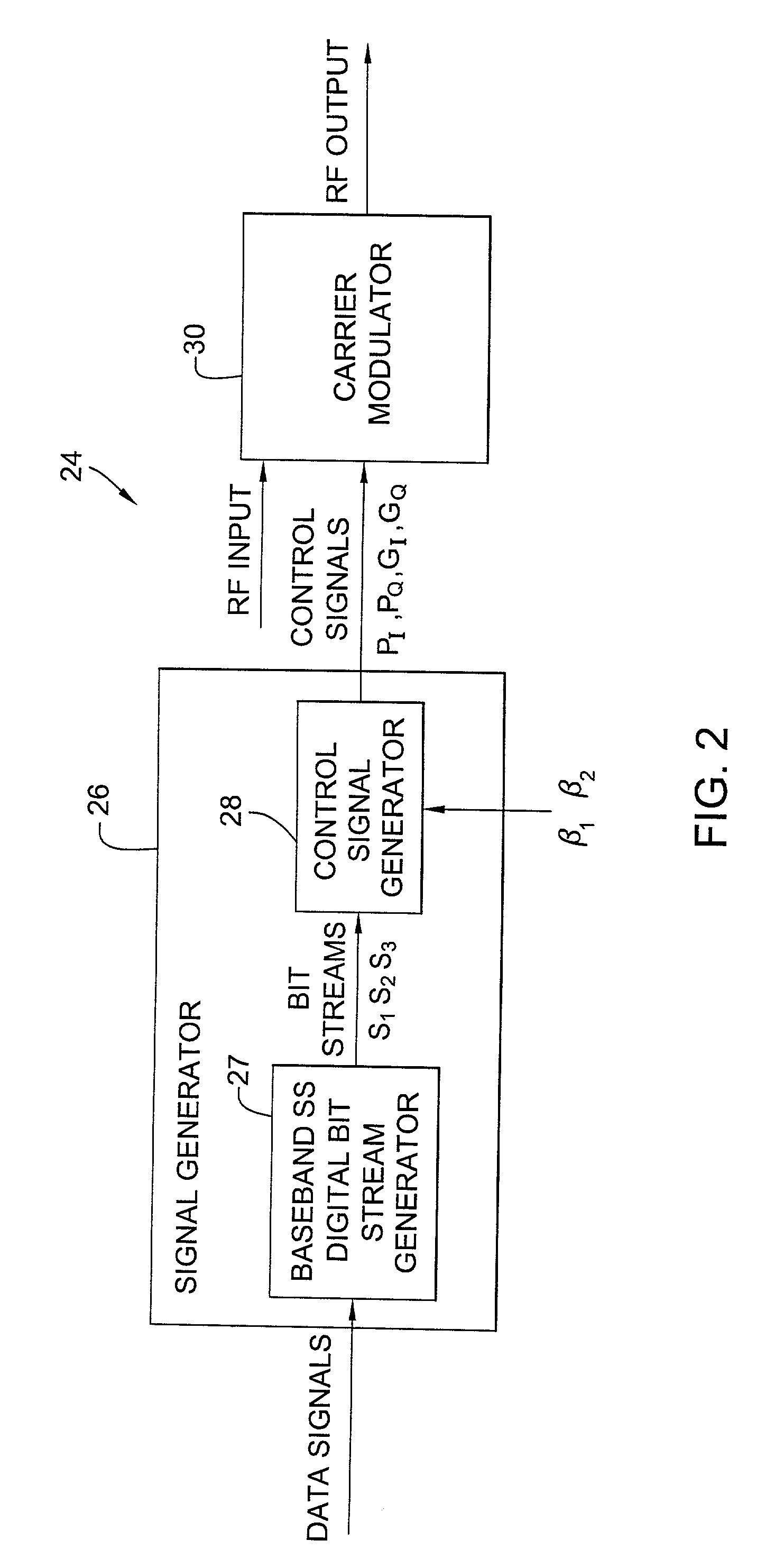Method and apparatus for generating a composite signal
a composite signal and signal technology, applied in the direction of generating/distributing signals, phase-modulated carrier systems, instruments, etc., can solve the problems of power-inefficient mechanization, constant-envelope signal structure, amplitude fluctuations of 4–5 db peak-to-average power, etc., to improve reliability and power efficiency, simplify hardware implementation, and reduce cost, weight, size and complexity
- Summary
- Abstract
- Description
- Claims
- Application Information
AI Technical Summary
Benefits of technology
Problems solved by technology
Method used
Image
Examples
Embodiment Construction
[0034]The following detailed explanations of FIGS. 2–4 and of the preferred embodiments reveal the methods and apparatus of the present invention. In accordance with a non-limiting exemplary embodiment, the waveform generator of the present invention can be employed in a CDMA communication system transmitting multiple CDMA signals to a single location or to group of spatially dispersed users. These signals employ binary phase-shift keying (BPSK) or quadrature phase-shift keying (QPSK), direct sequence (DS) spread spectrum modulation and have a common chip rate and carrier frequency. The timing of the transmissions being under control of the transmitter, the multiple CDMA signals are chip-synchronous. For purposes of illustration, in the exemplary embodiment, three chip-synchronous DS spread-spectrum signals, S1, S2, and S3, are simultaneously transmitted via a constant-envelope composite signal formed using an interplex modulation scheme. However, the present invention is not limite...
PUM
 Login to View More
Login to View More Abstract
Description
Claims
Application Information
 Login to View More
Login to View More - R&D
- Intellectual Property
- Life Sciences
- Materials
- Tech Scout
- Unparalleled Data Quality
- Higher Quality Content
- 60% Fewer Hallucinations
Browse by: Latest US Patents, China's latest patents, Technical Efficacy Thesaurus, Application Domain, Technology Topic, Popular Technical Reports.
© 2025 PatSnap. All rights reserved.Legal|Privacy policy|Modern Slavery Act Transparency Statement|Sitemap|About US| Contact US: help@patsnap.com



